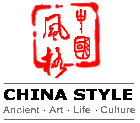Chinese Ceramics Culture
The charm of Chinese ceramics culture not only lies in its wide range of expressions on social life, nature, culture, customs, philosophy, and various notions, but also in the way of its expression, which is a demonstration of Chinese culture from many angles.
As part of Chinese culture, the history of Chinese ceramics culture is a vivid and vital part of the nation's cultural history.
The pottery in the Neolithic (8,000-2,000BC in China) period records the survival will of the ancient people. Pigs, dogs, and cows made of clay signified people's fierce struggle with the environment at the time, from which we can also find the traces of the development and involvement of civilization. Each piece of work vividly revealed a scene of people interacting with the environment.
The terra-cotta warriors and horses in Xi'an of Northwest China's Shaanxi Province reflect the people's philosophy at that time, and vividly record the history in a unique way.
The courageous, strict, and serious generals; the cavaliers awaiting their orders; the infantry wearing their armors and holding their weapons; the archers holding their bows and looking straight at the enemies; as well as the brave horses all constituted a magnificent force, emitting a sense of masculinity, bravery, and power.
Gazing at the spectacular pottery troops of more than two thousand years ago, modern visitors are brought back to wars and flames at the end of the Warring States Period (475-221BC), and are much impressed by the invincible Qin troop that virtually made a clean sweep of their enemies, even if the troop is just made of pottery.
By the Han Dynasty (206BC-220AD), the social economy had recovered from the wounds of long-time wars, and the society had also experienced substantial developments in many aspects, which also contributed to cultural characteristics different from those of the Qin Dynasty (221-207BC). The content and artistic styles of the pottery works were also in turn different from that of the Qin Dynasty.
Whether the pottery works featured humans or animals, the emphasis of the works was no longer as realistic as in the Qin Dynasty. Instead of attaching great importance to lifelikeness and details, the pottery and porcelain works during the Han Dynasty paid more attention to grasping the spiritual content of the works, and emphasized the use of gestures and facial expressions. The bold, unconstrained, flowing, and flexible style also echoed the aesthetic taste of the Han Dynasty.
The "Tang Tri-color pottery," with its excited, high-spirited, magnificent, and intense-colored style, resembled the time spirit of the Tang Dynasty (618-907), when China was the leading and most open civilization in the world.
The pretty and handsome ceramics of the Song Dynasty (960-1279) embodied the aesthetic standards and philosophical notions of the time.
The multicolored, soft, delicate, and exquisite porcelains of the Ming and Qing dynasties (1368-1911) were the results of changing social lives and aesthetic notions.
Since the implementation of the Reform and Open-up policy by the People's Republic of China (1949-) in 1978, the bold and unrestrained style of the pottery and porcelain works have reflected the changes in the politics, notions, and lives of the society.


